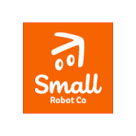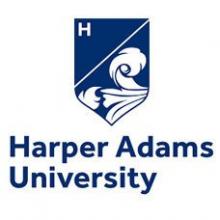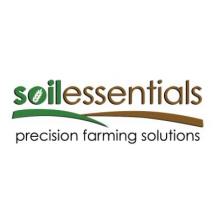This page connects organisations and projects working to develop robotics in agriculture. If you would like to add a Wikipedia style summary to this page and connect to useful initiatives and resources then just click the orange 'Join Page' button.

The use of robotics is rapidly developing in agriculture, with large and small autonomous vehicles becoming commercially available.
Recommended Content
Content below is from across the PEP community and is not necessarily endorsed by Stewards or by PEP
Connected Content
Agriculture now generates vast amounts of data of different types and at different scales. The ownership, access, control, sharing, value, permissioning, intergration, security, safeguarding and sovereignty of this data represent multiple challenges and opportunities for the sector.
The agri-tech sector is vibrant and growing, with many exciting companies, organisations and networks are working to develop agri-tech solutions.
Unmanned aerial vehicles (UAVs), more commonly known as drones, are being increasingly used in agriculture to improve farming efficiency and productivity.
A range of digital technologies promise to transform agriculture, including sensing, robotics, artificial intelligence, wireless networks & IoT, big data, decision support tools, modelling, digital twins and precision farming.
Precision farming involves the use of GPS, sensing and control technologies to use spatial data to manage soils, crops and livestock.
After four years acting as a 3rd party distributor of various software and hardware, and a highly experienced training school, In 2019, frustrated with existing drone-based, crop monitoring methods, they decided to develop their own smartphone app called "Skippy Scout".
Agri-tech businesses, farmers, growers and researchers can now apply for a share of £12.5m for developing cutting-edge innovation in automation and robotics.
Autonomous Agri Solutions was founded by two Agricultural Engineering graduates; both with a passion to propel the UK into the Fourth Agricultural Revolution.
Farmers, growers, innovators and stakeholders coming together to maximise the potential of Agri-tech. In person event at NIAB, Histon, Cambridge on 1 December
Small Robot Company is reimagining farming to make food production sustainable. Using robotics and artificial intelligence, we have created an entirely new model for ecologically harmonious, efficient and profitable farming. We call this Per Plant farming.
An innovative mixed farm in Oxfordshire is working with applied researchers at NIAB and ADAS to explore whether precision planting of wheat can increase yield, compared to conventional seed drilling in rows. The project is supported by Defra through the Farming Innovation Programme, delivered in partnership with Innovate UK.
Report by FAO on utilising robotics and digital agriculture: FAO. 2022. The State of Food and Agriculture 2022. Leveraging automation in agriculture for transforming agrifood systems. Rome, FAO. https://doi.org/10.4060/cb9479en
Strategies Leading to Improved Management and Enhanced Resilience against Slugs (SLIMERS) This project is led by BOFIN, partnered with CHAP, AGRIVATION, Harper Adams University, John Innes Centre, and Small Robot Company. It is funded by Defra Farming Innovation Programme, delivered by Innovate UK.
The University of Warwick recently announced the formation of Warwick Agri-Tech to help the future of farming with automation – addressing issues such as labour shortages, food insecurity and loss of biodiversity.
Profiling some of the exciting research, development, and commercially available technology in the region. Full Agenda below.
The AAB Horticultural Quality and Food Loss Specialist Group organised a two-day event titled 'Horticultural Science: From Discovery to Application' that brought together researchers working on both fundamental and applied research in Horticultural Crops.
The global agricultural sector faces a significant number of challenges for a sustainable future, and one of the tools proposed to address these challenges is the use of automation in agriculture.








